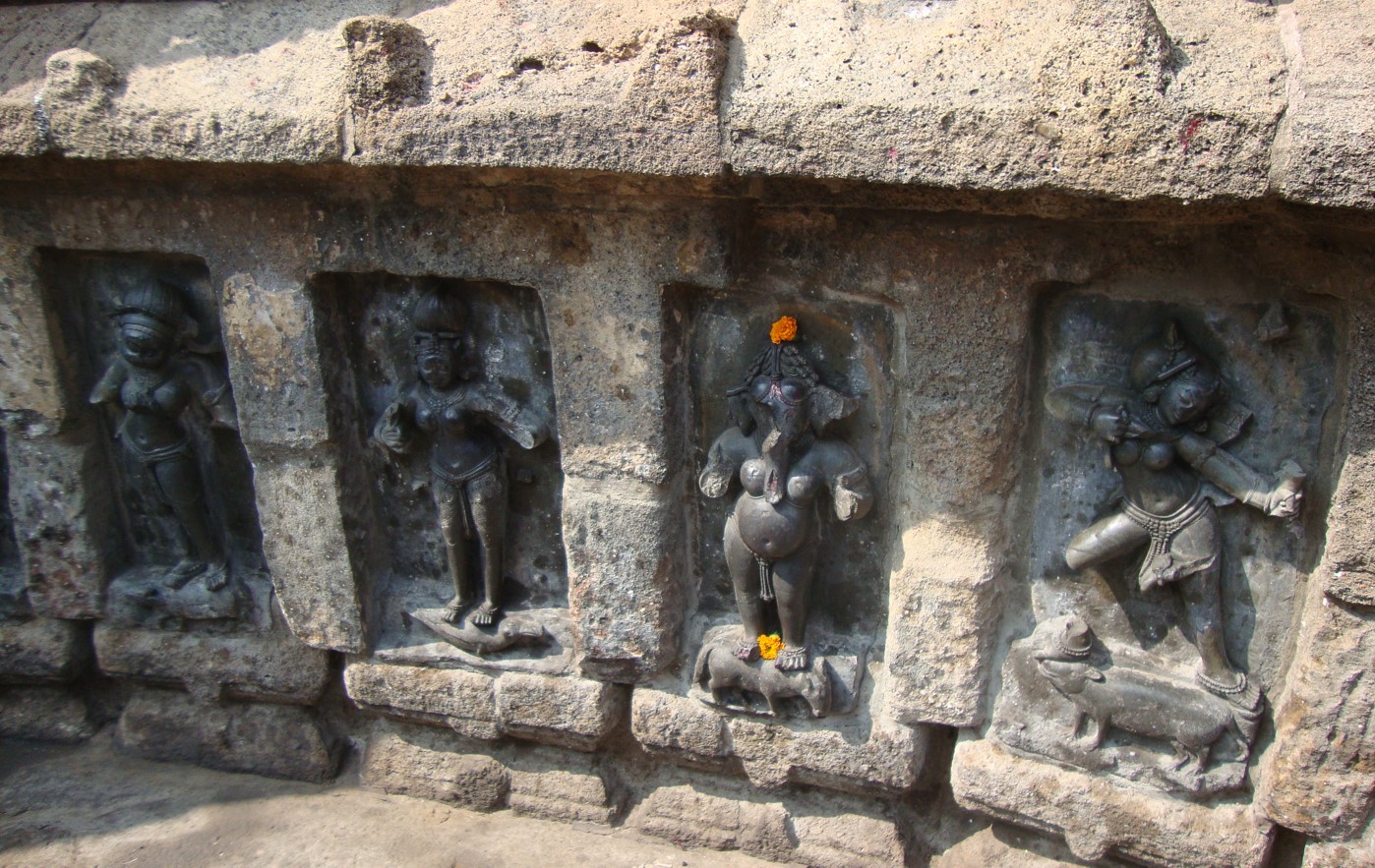If you are fond of fascinating folklores and the unexplored Indian mysteries, then a visit to the ancient Chausath Yogini Temple in Hirapur should be on your Odisha itinerary. Popular as the Mahamaya Temple among locals, this prehistoric shine is almost 20 km from Bhubaneswar and can be covered on the way to Konark or Puri. Famous as a tantra-mantra site from the bygone era, this unique temple is dedicated to yogini worshiping and has some legendary myths associated with it.
To unfold the mystery of this offbeat temple, on a bright sunny day we hired a taxi and headed to Hirapur for a rural adventure. As we crossed tiny pockets of kutcha huts and the green landscape dotted with coconut, palm, and betel nut trees, the local folks told us to follow a single-lane canal road that would take us to our destination. According to ancient beliefs, the yoginis or yaskhinis were divine spirits that derived power from nature and cosmic forces, which can be seen in the sculptural iconography of the Hirapur goddesses carved with different animal vehicles.
Despite frequent attacks from Muslim rulers and the British army, the Hirapur Chausath Yogini temple is one of the few well-preserved yogini temples in India. It is still considered a religious power hub (shakti peethas) in Hindu mythology and remains to be a living temple where devotees come to worship the 64 avatars of Goddess Shakti. At this temple, the inner sanctum has 64 desecrated yogini statues built using black chlorite rock. Each statue has unique hairstyles and facial expressions constructed in a circular alignment. The main statue in the centre is of goddess Durga – the demon slayer – worshipped for a whole month during the Jatra festival.
The temple’s pandit (priest) mentioned that this 9th Century sandstone shrine was built by the Queen Hiradevi of the Bramha dynasty. The shape of the temple has the form of a yoni-pedestal for a Shiva lingam with a Chandi Mandap constructed in the center, where a Bhairav (an avatar of Shiva) statue used to be, and tantric sadhnas (dark magic) practitioners performed animal sacrificial rituals to please the yoginis. At the entrance of the temple, sculptures of two dwarpals (guards) are built on left and right hand side of the gate to protect the inner sanctum. The outer walls of the temple depict engraved sculptures of the nav devi (nine holy goddesses) in victory mudras (positions). A very unique yogini statue here is the feminine form of Ganesha (the elephant god), which is a one-of-a-kind depiction of this deity in the country. Eight of these yoginis have astrological symbolism with zodiac animals like crab, scorpion, goat, etc. as their vehicles.
The less-explored hamlet of Hirapur is located in the outskirts of the capital of the state, and it comes under the Khordha (Khurda) District, known for its brass utensils and cottage industries. This District has a noteworthy population of Savara (aka the Shavara or Sora aboriginal tribe) known for worshipping the mysterious feminine deities like Parnasavari (meaning goddess of Savars, who wears a distinct girdle of leaves). Among the 64 statues in the inner sanctum of the Chausath Yogini temple, one can find the statue of goddess Parnasavari, a slayer of epidemics and diseases according to Tantric Hindu-Buddhist scriptures.
A typical characteristic of any Chausath Yogini temple is that it’s built in hypaethral (roof-less) circular style for praying in a ring (chakra sadhana), unlike mainstream Hindu temples with closed or towering tops. Back in the day, these temples were considered to be powerful spots for sacrificial worshipping and tantra rituals that were performed under the open sky. Due to the secretive nature of these cult practices, such temples were commonly constructed in remote locations away from urban settlements usually near cremation grounds, and even today the residents prefer to keep a safe distance from these spooky sites.
Outside the premises is a relic victory tower (toran) built by one of the royal patrons, but it has no specific use in temple rituals. Right in front of the entrance gate, you’ll notice a typical square-shaped ancient water tank (kund) with steps and a semi-immersed temple top in the centre of the water body. This tantra temple is a historically protected monument under the Archaeological Survey of India (ASI) and Odisha Government, and entry here is free for all Indian and foreign visitors. It is also a plastic-free site, where any kind of littering or destruction of the archeological preserves can attract heavy fines.
Plan ahead: The temple opens at 4 am and closes by 7 pm. The temple serves a Prasad of rice cooked in milk during afternoon bhog, which is distributed during lunch hours.
Travel tips: Although the GPS directions on your phone can take you somewhere close to this location, it is always a good idea to stop and ask the locals for directions. The unmetalled road (kutcha rasta) near the shrine can be confusing for an outsider so go with a local guide or driver, who can converse in the local dialect without getting lost.


